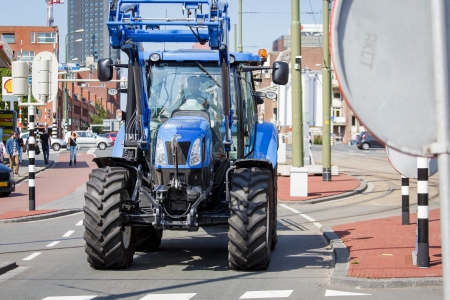Since 1 July 2015, drivers of tractors and motor vehicles with limited speed on the public road must have a T-licence. Although the Dutch Safety Board [2] expects that the T-licence will have a positive road safety effect, no evidence is known. Further investigation is required to establish the effects. At the introduction of the T-license, the Ministry of Infrastructure and the Environment has given their undertaking to evaluate the effects [13].
Before the introduction of the T-license, a ‘certificate of professional competence’ was sufficient if one was 16 or 17 years old and worked with a tractor on the public road as an employee. This was not a driving licence within the context of the Road Traffic Act, even though it was often referred to as the ‘tractor driving licence for youths’. The requirements for this certificate mainly focused on vehicle control and they were minor compared with the driving test for car, motorcycle, truck and the current T-licence.
The exam for the T-licence consists of a theoretical and a practical part and is held by CBR, the organisation in the Netherlands that administers basic driving tests as well as advanced tests for experienced drivers. The theory test can be passed from 15.5 years old and the candidate may take practical lessons from 16 years of age. The practical test is taken and must be passed on the public road in a tractor with trailer. Various driving schools and schools for agricultural education offer theory lessons and practical lessons. Following recommendations of the Dutch Safety Board [2] requirements concerning safe traffic behaviour have been included in the official requirements for the T-licence [14], in addition to requirements concerning vehicle control. This means that the candidate must show during the ride a) to take account of the interests of other road users and the road environment, b) to anticipate traffic developments and c) to engage in positive communication with other road users.
